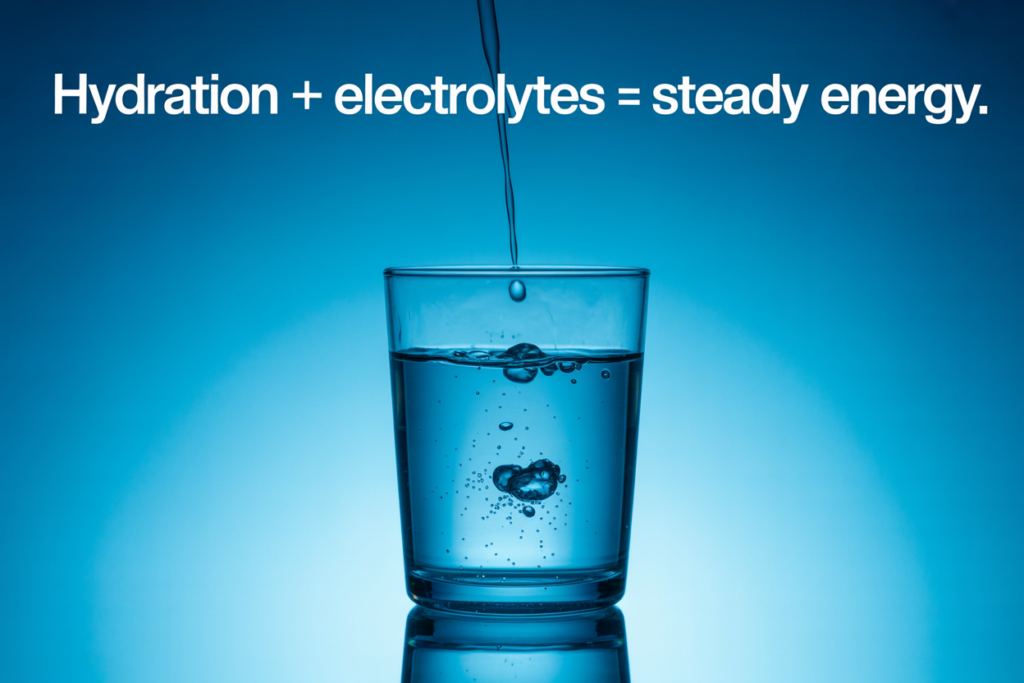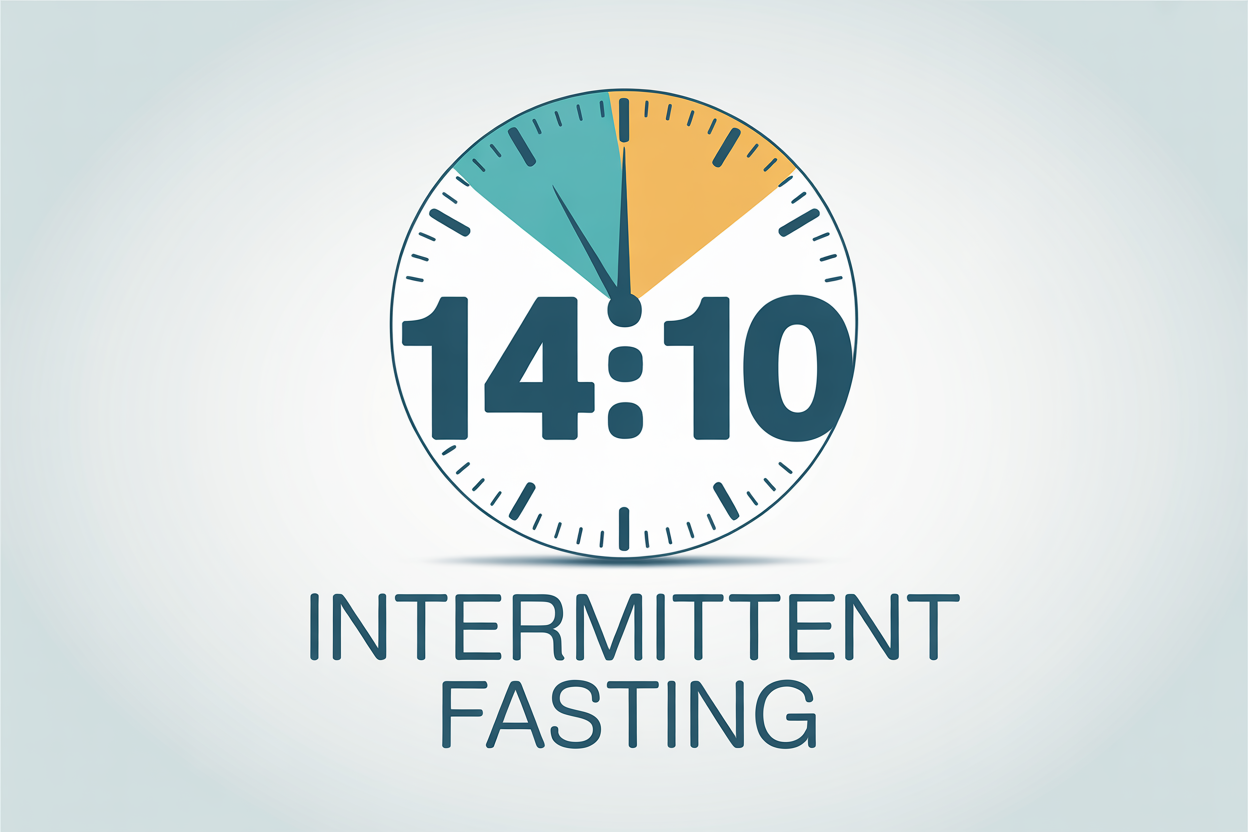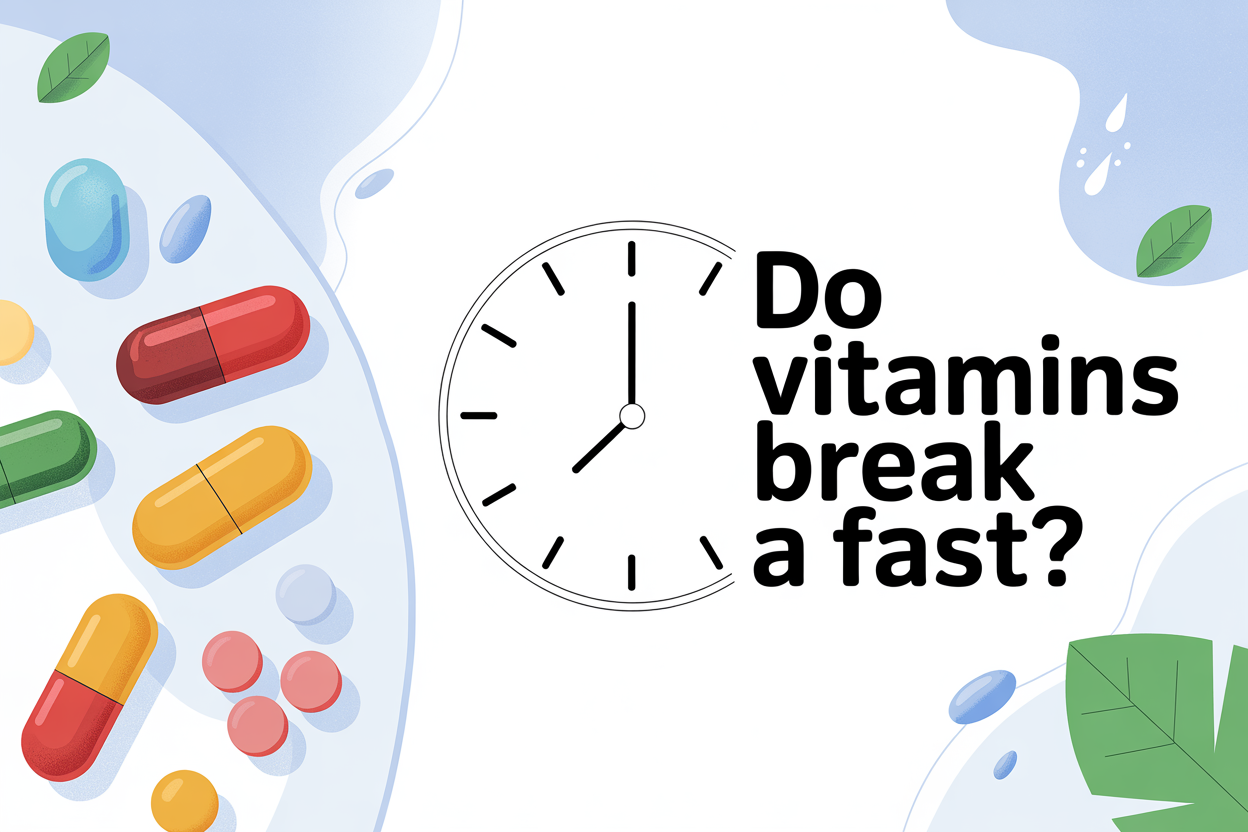Most people quit fasting not because it doesn’t work, but because their schedule does.
The 14:10 window—fourteen hours fasted, ten hours fed—lands right in that sustainable middle ground. It’s flexible enough to live with, structured enough to make a difference, and forgiving enough to keep you from burning out. Think of it as the everyday athlete’s fasting rhythm: steady, livable, and built for long-term wins instead of white-knuckled extremes.
What 14:10 Actually Means
At its simplest, 14:10 means you fast for fourteen hours, then eat during a ten-hour window each day. It’s less rigid than the well-known 16:8 model but more intentional than 12:12. That’s exactly why it tends to stick—because it works with life instead of against it.
This rhythm suits anyone who needs structure but also has a life. Early risers can push breakfast back a little without skipping it altogether. Parents can sit down for dinner with their kids without the guilt of breaking their fast. Morning exercisers get to refuel soon after a session instead of waiting until noon. Even social eaters who enjoy dinners out can stay consistent by adjusting meal timing slightly instead of throwing the whole system out the window.
The beauty of 14:10 is that it doesn’t demand perfection. You don’t have to skip dinner or delay your first bite until late morning. You just stop eating a little earlier and start a little later, folding the rhythm into your normal day. Your mornings stay productive, your nights stay human, and your metabolism gets the consistency it thrives on.
Why This Fasting Window Works
The best fasting window is the one you’ll actually follow. That’s what makes 14:10 a favorite among beginners and experienced fasters alike. It fits into real schedules and doesn’t punish you for having a social life.
Fourteen hours of fasting sounds long, but you spend most of it asleep. If you stop eating by seven in the evening and don’t eat again until nine the next morning, you’ve already hit your mark without any heroic effort. This subtle structure encourages habit-building instead of willpower burnout.
Finishing food earlier in the evening also supports better sleep. Late meals can interfere with REM cycles and digestion, but cutting off a few hours before bed allows your body to transition easily into proper rest. The next morning, your energy can even feel steadier instead of sluggish.
And the science backs it up. Even moderate time-restricted eating shows measurable improvements in fasting glucose, blood pressure, and waist circumference when practiced consistently. You don’t need to chase extreme numbers to get results; you need a pattern you can sustain.
Perhaps most underrated, though, is how this window regulates hunger. Once your eating times stabilize, your hormones follow. Ghrelin—the hunger signal—starts pulsing on a schedule, so instead of unpredictable cravings, you feel hungry and full at consistent times. That makes fasting feel natural instead of restrictive.
14:10 offers the same physiological benefits that stricter fasts promise but without the irritability, mental fog, or social tension. It’s structured discipline, not punishment.
What Your Body Does on a 14:10 Fast
The magic of fasting lies in rhythm, not starvation. When you give your body a break between meals, insulin levels drop, and stored fat becomes available for energy. You don’t need to eliminate food groups or count every calorie—just shorten the window in which you eat.
During the fasting phase, insulin remains low, allowing lipolysis—the release of stored fat—to occur naturally. As you approach the eating window, hunger hormones rise predictably, digestion gears up, and your metabolism becomes even more efficient at switching between burning fat and carbohydrates.

A consistent fasting window also strengthens appetite rhythms. Over time, your body “learns” when to expect fuel, reducing random snack urges that are usually triggered by stress or boredom rather than true need.
Perhaps most interesting, 14:10 aligns beautifully with our internal clocks. Humans evolved to eat during daylight and rest at night. Metabolic hormones like insulin, cortisol, and melatonin all follow that circadian rhythm. When you stop eating after sunset, you’re not just cutting calories—you’re syncing digestion, energy, and recovery with your biology.
You’re not eating less for the sake of less; you’re eating within the rhythm your body already understands.
What Studies Say About the 14:10
Time-restricted eating research has exploded in the past decade, and the pattern is clear: modest, consistent fasting improves health markers even without calorie restriction.
Studies found that participants who practiced daily fasting windows between 12 and 16 hours saw reduced fasting glucose and steadier insulin responses after meals. Overweight adults showed improvements in waist circumference, triglycerides, and systolic blood pressure after just eight to twelve weeks.
Interestingly, the 14-hour window showed the highest long-term adherence of any tested schedule. Participants were more likely to stick with it for six months or longer—an advantage that often outweighs slightly faster results from stricter routines.
Consistency beats extremity every time. A 14-hour fast done five days a week outperforms a 16-hour fast done twice before burnout sets in.
And anecdotal evidence aligns with data: people report smoother energy, fewer mid-afternoon slumps, and smaller post-meal glucose spikes. It’s not about eating less food—it’s about eating in better alignment.
Who Thrives—and Who Might Struggle
14:10 works for most people, but not everyone. Desk workers and remote professionals love it because they can push breakfast later and avoid grazing through the morning. Early risers find it fits naturally with their mornings, and anyone chasing better metabolic health—stable weight, mental focus, or fewer crashes—usually adapts quickly.
It’s trickier for people whose schedules flip. Shift workers face a mismatch between fasting and circadian rhythms, which can make the benefits harder to realize. Families who eat dinner late or social eaters who often finish at nine might struggle with consistency unless they adjust by an hour or two. Endurance athletes, too, sometimes find the window too narrow for high-calorie demands, though adding dense foods like rice, nut butters, or olive oil easily bridges that gap.
If fourteen hours feels too steep, start with a 13:11 ratio for a week, then extend. The body adapts faster than the mind expects. You don’t have to “win” fasting on day one—you just have to show up for it.
Pairing the 14:10 with Your Training
Exercise and fasting can work beautifully together when you pay attention to recovery. A morning lifter might train fasted, then break the fast around nine or ten with a high-protein meal—think eggs, salmon, or oatmeal stirred with protein powder.
Someone running or cycling mid-day can hydrate with electrolytes before training and eat their first meal afterward. Evening exercisers can still thrive on 14:10; they just need to time dinner soon after their workout and keep it light enough to allow sleep to come easily.
The rule is simple: pair your biggest meal with your hardest effort. Fasting is a tool for focus and metabolic balance, not a reason to shortchange your body’s repair process.
How to Plan Your Meals and What to Eat
A typical 14:10 day might open with a balanced, easy-to-digest meal: protein and cooked vegetables with little sugar. Something like scrambled eggs with spinach or chicken and zucchini works well. Later in the day, meals can include carbohydrates or fats depending on activity levels—rice or potatoes for training days, olive oil or nuts when you’re less active.
If hunger creeps in, a simple snack like Greek yogurt, a smoothie, or fruit keeps energy steady without derailing the rhythm. Hydration stays central: water, black coffee, or unsweetened tea during the fast, and electrolytes if needed once you’re active.
Caffeine is fine, but cut it by early afternoon. Your sleep that night will thank you. The goal isn’t constant discipline—it’s effortless rhythm.
Salt, Water, and Your Sanity
Many fasting “symptoms”—headaches, fatigue, lightheadedness—come down to salt and hydration. When insulin drops, the kidneys release more sodium, so a small electrolyte adjustment makes a big difference.
Start mornings with a pinch of salt in water or a zero-calorie electrolyte tablet. Keep a steady flow of fluids through the day—one to two liters of water or herbal tea is a solid range. If you’re sweating heavily during exercise, add sodium and potassium afterward.
And though caffeine helps blunt appetite, overdoing it backfires. Too much coffee dehydrates and spikes cortisol, which may increase cravings later. Balance stimulation with hydration; they’re part of the same system.
Weekends, Trips, and Real Life
Here’s where 14:10 shines. It fits into actual life. If you have a Friday dinner with friends, push your window forward by an hour or two and slide back the next day. Travel? Reset your timing with local daylight, hydrate aggressively, and you’re back on track.
Morning light helps reinforce your fasting rhythm, signaling your body that the day has begun. Dimming lights after dinner helps signal that the fast has started. That circadian consistency supports deep sleep—especially if you finish eating two to three hours before bed.
Magnesium supplements or herbal teas like chamomile and lemon balm can enhance that wind-down phase, but often it’s the rhythm itself—finishing dinner earlier—that makes the biggest difference. 14:10 lets you live, travel, and sleep without guilt. That’s sustainability.
What to Do When Progress Stalls
When the scale stalls, don’t panic or starve. Small adjustments usually restart progress. Extending the window once or twice a week to 15:9 gives the metabolism a gentle push. Walking more—7,000 to 10,000 steps a day—improves glucose uptake.
Protein often ends up as the missing link. Aim for roughly a gram per pound of lean body mass, and pair it with strength training at least three times weekly. Muscle mass is metabolic insurance because it keeps you burning energy even when resting.
The magic beyond fasting is what consistency does over time.
How to Fix the Usual Snags
Almost every fasting hiccup has a simple fix.

If you develop headaches, you’re probably low on sodium or water—add electrolytes and they usually vanish. Bloating comes from breaking the fast too quickly or eating too much fiber all at once; start with lighter meals and skip carbonation. Persistent cravings signal too little protein or fiber in your first meal.
Women may notice energy drops during their luteal phase; easing fasting length or adding an earlier snack during that week often resolves it. And if you find yourself under-eating, use calorie-dense whole foods like nuts, avocado, or olive oil to make up the difference without discomfort.
It’s all feedback. Fasting works best when you listen and adjust instead of forcing control.
Three Real Schedules You Could Try
For a desk worker, a 9 a.m. to 7 p.m. window works smoothly. Breakfast might be Greek yogurt and fruit, lunch a chicken wrap or leftovers, and dinner a plate of protein, starch, and vegetables. Light strength training three times a week and an afternoon caffeine cutoff keep energy stable.
A parent schedule often runs from 8 a.m. to 6 p.m. Meals revolve around family times: breakfast with the kids, early dinner together, then herbal tea after bedtime. Weekends can shift to 9–7 without harm.
Shift workers can adapt by anchoring their meals around mid-shift and post-shift recovery, usually between noon and ten. Daylight exposure after waking and strong hydration cue the body clock.
These are not rigid plans—they’re frameworks. Once fasting feels routine, you can flex it as life changes.
Track Your Fast Smarter with the Fasting App by Municorn
If you want your 14:10 window to actually stick, track it. The Fasting App by Municorn lets you log your fasting and eating windows, hydration, sleep, and steps—all in one place. You can tag moods, cravings, and energy levels to see patterns that explain your plateaus or progress.
After a few weeks, the data tells your story better than any theory. You’ll see which habits make fasting easier, which meals trigger hunger rebounds, and when your energy peaks. That kind of feedback turns routine into mastery. Your window is already gentle. The app just makes it personal.



